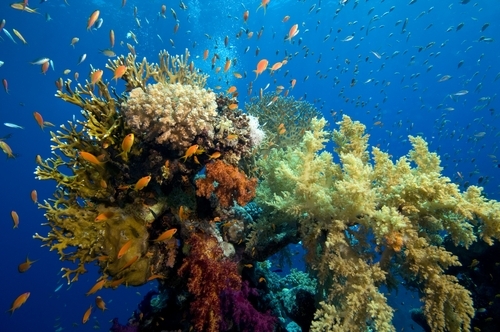
FAQs: Great Barrier Reef
Australians care about their country’s natural beauty. From the breathtaking Blue Mountains to the rugged outback, Australia’s unique ecosystems are worth protecting. The Great Barrier Reef is one of the country’s most incredible natural wonders, and it has garnered a title as a World Heritage Site to boot. Combined, the state of Queensland and the country of Australia invest about $180 million to protect this incredible structure, according to the Australian government. If you’re interested in learning more about this fascinating landmark, read on – we’ve answered a few of your questions.
What exactly is the Great Barrier Reef?
The GBR, like all reefs, is an comprised of a symbiotic community of corals, fish, mammals, microscopic organisms and other creatures. According to the GBR’s official website, the entity is home to 30 species of marine mammals, six species of sea turtles, 17 species of sea snake, more than 1,500 species of fish and 215 species of birds. This makes for an incredible biodiverse ecosystem spread out over an area roughly the size of Japan.
What threats is the GBR currently facing?
Climate change is a major threat to the reef. Ocean acidification, which upsets the pH balance of the world’s oceans, results from increasing levels of CO2 in the ocean. These changes in pH throw off the entire ocean system, and pose a significant threat to reefs everywhere.
Additionally, warming temperatures in the ocean can lead to coral bleaching. The National Ocean Service states that when corals are stressed, they release the algae that line their outer surfaces, resulting in an all-over white colour. These algae are beneficial for the health of the reef, and their expulsion gives firm evidence that corals have become stressed. The GBR experienced two significant coral bleaching instances, in 1998 and 2002.
Furthermore, impacts of unsustainable living on land have repercussions for life in the sea. Sediment released into the ocean from massive agriculture and farming operations can reach the reef and cause upset within the system. The Great Barrier Reef Marine Park Authority also notes that rubbish such as plastic bags and other litter can make its way into the ocean, causing significant problems.
What can I do to help?
Reducing your own carbon emissions is an important step to take if you’re interested in protecting the reef (and the planet as a whole). Reduce energy use in your home by using efficient appliances, minimising your reliance on heating and cooling systems whenever possible, biking rather than driving and eating locally raised food (preferable plant-based fare). You can also do your part to reduce rubbish waste by using reusable bags, not purchasing bottled water, recycling whenever possible and eating non-packaged foods.


